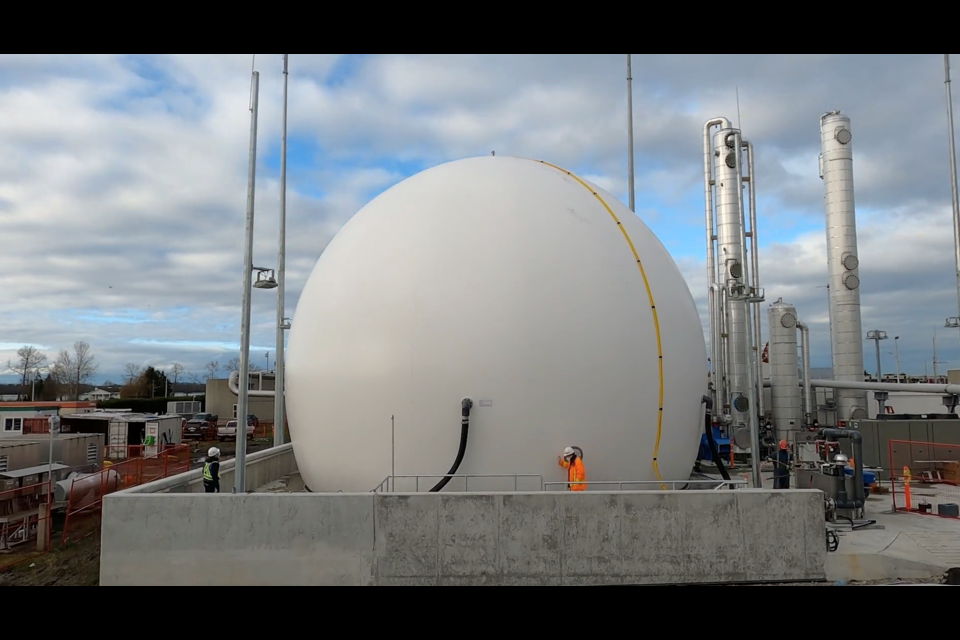More than 600 homes will soon be heated by renewable natural gas generated during the liquid wastewater treatment process in Richmond.
The Lulu Island Renewable Gas Facility – located at Metro Vancouver’s Lulu Island Wastewater Treatment Plant site – is the result of a partnership between the regional body and FortisBC to help reduce greenhouse gas emissions and combat climate change.
This type of facility is “pretty rare” and is believed to be the first of its kind in B.C., said Jeff Carmichael, Metro Vancouver’s division manager of business development.
Biogas is a natural by-product of the liquid wastewater treatment process, and some of it is already used as a fuel for indoor heating and plant processes at the facility.
Now, the unused biogas will be stored in a large, inflatable dome on the roof of the new Lulu Island Renewable Gas Facility, before its pushed through water to be cleaned, and fed directly into Fortis’ grid, explained Carmichael.
In total, he said, the renewable natural gas will reduce around 2,500 tonnes of greenhouse gas emissions that otherwise would have been produced by the 600 homes each year. Production of the renewable natural gas will begin next month and will increase as the population grows.
Through their agreement, Metro Vancouver and Fortis also aim to help improve local air quality, road and marine transportation and high-performance buildings and industrial facilities by replacing the use of fossil fuels with the renewable natural gas, according to Adriane Carr, chair of the Metro Vancouver Climate Action Committee.
For example, the water-scrubbing method used to clean the gas helps to reduce hydrogen sulfide – that sort of “rotten egg” smell in the air, said Carr.
She added that, while the facility is not a long-term solution, it will have “a significant short-term impact.”
“We can’t just wait until everything is fossil fuel-free,” she said. “There are steps to get to fossil fuel-free and steps to transforming, for example, our transportation industry and the way we heat our homes, in order to get to the kind of zero emissions that really, the planet has to get to in order to avoid the really catastrophic impacts of climate change that we’re already seeing happening.”
The Lulu Island project can also be scaled up, said Carmichael.
“At (the Lulu Island Wastewater Treatment Plant) we’re looking at ways to grab heat out of the treated sewage, and use that to heat the plant, so we have even more gas available to go to Fortis,” he said.
“There are also other facilities that produce a similar kind of gas like landfills, which provide a great opportunity to clean and grab that (renewable natural) gas and put it into the Fortis system.”
FortisBC is hoping to source enough carbon-neutral renewable natural gas to make up 15 per cent of its overall natural gas supply by 2030 – part of its commitment to reduce GHGs by 30 per cent by that year.
Metro Vancouver’s goal is to reduce GHGs by 45 per cent by 2030.




